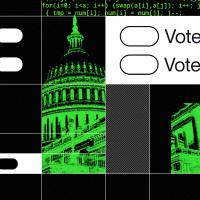Venezuela’s cryptocurrency catastrophe had hopeful beginnings.
In December of 2017, Venezuelan president Nicolás Maduro announced that his regime would be implementing the world’s first state-backed cryptocurrency. It was a revolutionary idea, poised to save the nation’s economy by mitigating the effects of rapid inflation. How the plan unfolded is a different story.
Venezuela’s Cryptocurrency Catastrophe
In 1999, Venezuela appeared to be living the dream. The country had just introduced its first president, Hugo Chávez, and the price-per-barrel of crude oil was continuing to rise. For a country that acquired 90% of its overall revenue from oil, this meant opportunities to expand social programs and raise the quality of life for Venezuelans.
But it unfortunately led to corruption. While Chávez spent some money on social initiatives, he also revealed an authoritarian agenda, shifting government motives from empowering the people to concentrating power in the executive branch. He increased term limits for himself and, allegedly, suppressed media from parties that opposed him.
By the time of Chávez’s death in 2013, the Venezuelan democracy was largely broken. Nicolás Maduro took over the presidency next, in the midst of a falling international demand for oil due to booming domestic production in the U.S. and shifting policies by the Organization of Petroleum Exporting Countries.
With the Venezuelan economy crippled by an over-supply of oil, many workers dependent on the industry were left without income. The government resorted to solving its economic woes by simply printing massive amounts of their currency — the bolivar.
This caused a huge surge in inflation while capital controls imposed by the government made it increasingly difficult for importers to participate in international trade. Scarcity ensued, rendering it nearly impossible for Venezuelans to purchase basic goods such as food and hygiene products.
Citizens tried turning to debit cards, but items were so expensive that they couldn’t buy a loaf of bread without exceeding their daily limit. Out of options and desperate, Maduro looked to cryptocurrency in hopes of giving Venezuelans a new means of economic exchange, while keeping funds under government control.
Venezuela’s cryptocurrency would be backed by the country’s oil and mineral reserves to combat inflation and circumvent U.S. sanctions to gain access to international financing.
A cryptocurrency is a virtual form of currency secured by cryptography, rendering it almost impossible to counterfeit. How does cryptocurrency work? Cryptocurrencies use blockchain technology and are built on decentralized networks. This protects the system from manipulation and interference by central authorities.
During this time, the people of Venezuela were already using cryptocurrencies such as Bitcoin to make peer-to-peer transactions that were immune to interference from the Venezuelan government.
Expats would use cryptocurrency to send remittances back to their home country, where family members could convert the currency into bolivars to pay their bills. Venezuela’s peer-to-peer Bitcoin activity remains particularly extraordinary, with citizen distrust of the government paving the way.
When Maduro announced Venezuela’s “Petro” cryptocurrency in December of 2017, however, he had very little understanding of the nature of cryptocurrency itself. The introduction of a state-backed form of this exchange was inherently at odds with what cryptocurrency was designed to do in the first place.
In fact, the creators of the Petro had hoped to implement limits coded into the blockchain to bring more transparency to the people. By doing so, they’d be able to see how the government was moving money and shed light on any existing corruption.
The Man Behind Venezuela’s Cryptocurrency
Gabriel Jimenez, the activist and entrepreneur who designed the Petro, always believed that cryptocurrency was the key to alleviating the devastating challenges facing his home country. He originally began designing the Petro prior to any interest from the Venezuelan government.
Jimenez had been speaking publicly about the potential of cryptocurrency to revolutionize Venezuela’s economic system, insisting that the Petro could empower people to take control of their finances.
When Jimenez was eventually contacted by the government about his ideas, he was skeptical. He thought perhaps they were planning to arrest him for his advocacy, but to his utter shock, they were interested in adopting the technology.
At first, Jimenez says he was excited, viewing their approval of the cryptocurrency as an opportunity to create a more transparent economic system. But the tables quickly turned.
“They had no actual clue what they just approved,” Jimenez explained. “The Venezuelan government was going to implement a technology that basically was going to expose them.”
As the Petro’s official launch date neared, Jimenez no longer had free reign over its design. Maduro’s government began insisting on restrictive rules for valuing and trading the cryptocurrency. In an effort to seize control of the entire project, the regime demanded to see a white paper outlining the details of exactly how the currency would function.
The night before the Petro’s release, Jimenez and his team found themselves at gunpoint — forced to hand over every piece of documentation they had on the technology. Following that night, the government removed Jimenez’s authorship of the project and declared him an enemy of the state.
Fearing for his safety, he was left with no choice but to flee to the U.S. By the time the government launched the Petro in 2018, Venezuelans widely viewed it as a stunt by the Maduro regime. The Petro never took hold as a viable and safe means of currency.
“The project failed,” said Jimenez. “I failed. I failed to my investors, to my coworkers, to my family, to everyone.” But despite the outcome of Venezuela’s cryptocurrency experiment, Jimenez remains hopeful in the power of this technology to ignite social change in his home country.
Today, he is still working on making cryptocurrency more mainstream in Venezuela, and he has every intention of returning as soon as he is able to.
“(The Petro) was a spearhead. It gave the opportunity of this regularization of the crypto industry within the country and that was a positive impact,” notes Jimenez. “I learned from my failures, and now I have way more reasons to try harder.”


